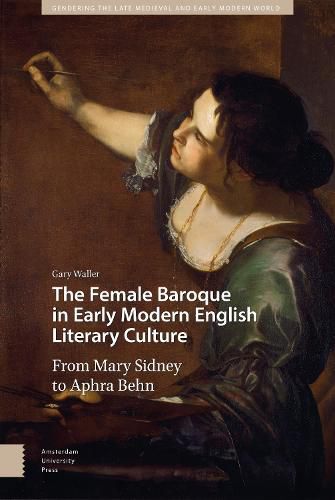Readings Newsletter
Become a Readings Member to make your shopping experience even easier.
Sign in or sign up for free!
You’re not far away from qualifying for FREE standard shipping within Australia
You’ve qualified for FREE standard shipping within Australia
The cart is loading…






The Female Baroque in Early Modern English Literary Culture is a contribution to the revival of early modern women’s writings and cultural production in English that began in the 1980s. Its originality is twofold: it links women’s writing in English with the wider context of Baroque culture, and it introduces the issue of gender into discussion of the Baroque. The title comes from Julia Kristeva’s study of Teresa of Avila, that ‘the secrets of Baroque civilization are female’. The book is built on a schema of recurring Baroque characteristics - narrativity, hyperbole, melancholia, kitsch, and plateauing, pointing less to surface manifestations and more to underlying ideological tensions. The crucial concept of the book is developed in detail. Particular attention is given to Gertrude More, Mary Ward, Aemilia Lanyer, The Ferrar/Collet women, Mary Wroth, the Cavendish sisters, Hester Pulter, Anne Hutchinson, and finally Margaret Cavendish and Aphra Behn, whose lives and writings point to the developing cultural transition to the Enlightenment.
$9.00 standard shipping within Australia
FREE standard shipping within Australia for orders over $100.00
Express & International shipping calculated at checkout
The Female Baroque in Early Modern English Literary Culture is a contribution to the revival of early modern women’s writings and cultural production in English that began in the 1980s. Its originality is twofold: it links women’s writing in English with the wider context of Baroque culture, and it introduces the issue of gender into discussion of the Baroque. The title comes from Julia Kristeva’s study of Teresa of Avila, that ‘the secrets of Baroque civilization are female’. The book is built on a schema of recurring Baroque characteristics - narrativity, hyperbole, melancholia, kitsch, and plateauing, pointing less to surface manifestations and more to underlying ideological tensions. The crucial concept of the book is developed in detail. Particular attention is given to Gertrude More, Mary Ward, Aemilia Lanyer, The Ferrar/Collet women, Mary Wroth, the Cavendish sisters, Hester Pulter, Anne Hutchinson, and finally Margaret Cavendish and Aphra Behn, whose lives and writings point to the developing cultural transition to the Enlightenment.